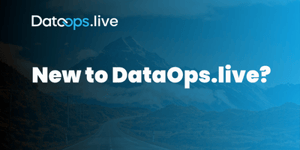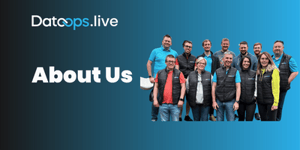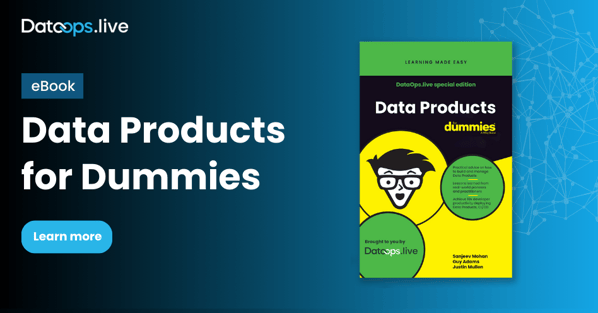We launched a new book, Data Products for Dummies (get your copy here), at Big Data LDN late last year. The book’s authors and other experts also held a standing-room-only keynote panel to share their expertise. This blog highlights some key takeaways from that panel.
Enterprises face the same data challenges over and over again: questionable data quality and limited data access, meaning longer time to insight. Data productization is the answer. “We’ve been talking about the theory for years—it’s now time for action,” says Sanjeev Mohan, Principal at SanjMo, former Gartner Research VP and co-author of the new book, Data Products for Dummies.
Victor Filipescu of NTT Data UK says his data product journey started 15 years ago—
“Although we didn’t know that at the time. The challenge we were given was to design a data solution once, build it once, and apply it multiple times. That was a great success, and I applied those learnings in my next role with a real-time data marketing platform. This was meant to provide customers with the right offer at the right time—however, there were no requirements to tell us what the right offer was and what the right time meant. Taking a Data Product approach—with a fully cross-functional team, working interactively to build our data platform and machine learning models—was the only way to succeed.”
“Creating Data Products is about reducing the friction that’s involved in delivering end results,” says Christian Tabb, co-founder and COO of LEIT Data, “Technology is almost the easy part: it’s the people, processes, and perhaps an emotional attachment to how people worked before that can be a problem. This is partly about educating people in the art of the possible.”
“I came from the software world,” says Guy Adams, co-founder and CTO of DataOps.live, “where stakeholders asked for something on Monday and would be disappointed if they had to wait until Wednesday. In the data world, if people asked for something on Monday, they’d be delighted if I told them they could have it in six months. There was clearly something wrong with the process. Those business users have now wised up and aren’t prepared to wait months, weeks, or even a few days. You can’t meet that need with the old ways of working. The only time you’re really delivering value is when you’re getting features into the hands of business users—and a Data Products approach enables that.”
From concept to reality: defining and building Data Products
Before using DataOps.live and adopting its novel data mesh approach, Roche managed only one release a quarter. It’s now achieving more than one thousand each quarter, with hundreds of data products in production at any given time. “In the past, we’d talked at a conceptual level about what a Data Product is,” says Paul Rankin, Head of Data Management Platforms at Roche. “Yes, you must have a product mindset behind it, meet FAIR principles (findability, accessibility, interoperability, reusability), and so on. But people can struggle to get past that—they don’t know how to.”
Roche has taken that concept to a physical layer, he says, mapping out a model of a Data Product. “This includes everything, from your codes, schema definitions, and SLOs and SLIs perhaps defined in another tool like Monte Carlo or Collibra, to where your actual Data Product is and the metadata are published, everything from the team and what they’re doing… For Roche, that logical model is what we call a data product.” Every relationship and every component in the journey end-to-end are considered within a Data Product’s boundaries.
“A Data Product is about looking at things from the business side,” Guy Adams says, “If I’ve built something that’s discoverable, trustworthy, composable, interoperable, backward compatible and tested, exclusive, built and released in an agile, fast way, and has a product and a product management methodology behind it—that’s a Data Product. And that might look like different things to different people. But if you can check the majority of those boxes, what you’re building is a data product.”
“Data Products always have a goal,” adds Chris Tabb, LEIT Data. “What you’re aiming to do is add business value, and that often means monetizing something: to wrap, sell, or improve a product. Our ultimate goal is to make our lives better with data, and we increasingly do this in a productized way,” which can include use cases and opportunities for monetization not yet considered.
Chris continues, “If you choose one of those three categories—wrap, sell, or improve—it can help you to articulate what you’re doing and what you want to achieve. It becomes easier to understand and so buy into. As I said before, people can be the hardest part of delivery, and this reduces friction from a people perspective. Because from a technology perspective, you’ve already nailed it with DataOps.live.”
The final word, for now, goes to NTT Data’s Victor Filipescu. “A Data Product is all about the benefits it brings to the business. Part of that is reducing rollout time for your data solution: reduced cost to deliver, faster time to market, accelerated time to value. We helped a customer to design, build, and launch a Data Product factory based on its existing BI team and capabilities. Once they started looking at their BI estate through a data product lens, they realized that many reports could actually be retired because every product has a shelf-life. And those operational costs can be used to help drive additional revenue, which is then invested in building new data products—all, of course, aligned to the business value and priorities.”
You can watch the panel here, which includes additional discussion on microservices, the benefits of Data Products, and ROI.






